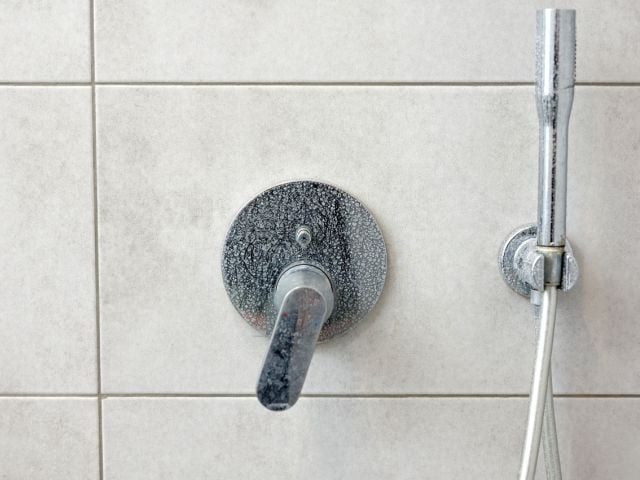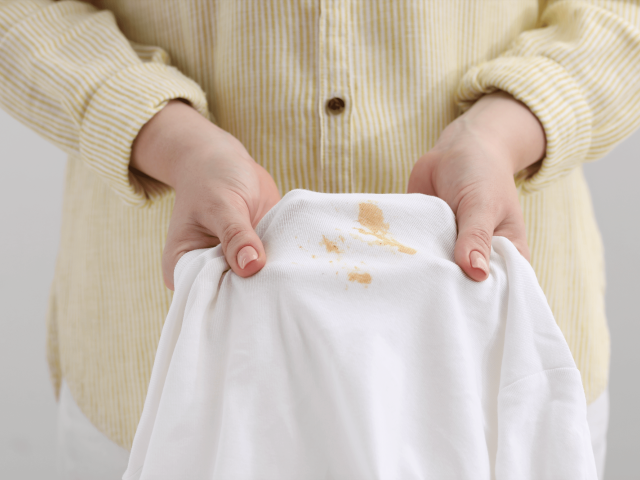
With autumn bringing harsher weather like the heavy rain and flooding from hurricanes, many people choose to close up their homes tightly.
Closed windows and doors keep the heat in, but they also trap moisture from cooking, cleaning, bathing, spills and even wet rain gear. All that dampness provides the perfect environment in which mold and mildew can thrive – and threaten our health.
Mold spores, the microscopic reproductive cells of molds, are everywhere – in the air and on surfaces like walls and furniture. When the air contains too much moisture, maybe because of leaks or flooding, mold spores can rapidly multiply. In just a few days, mold can spread and contaminate affected areas, such as those already compromised by storm damage.
Health hazards
When mold colonies are disturbed, thousands of tiny spores are released into the air, which can cause health problems when we inhale or touch them. Once exposed to mold, even otherwise healthy people can experience allergic and respiratory symptoms like sneezing, coughing, wheezing, irritated eyes and skin irritation.
People with asthma, allergies or a weakened immune system are at higher risk and can suffer serious problems, such as difficulty breathing and lung infections.
Prolonged exposure to mold can also worsen chronic respiratory disease, such as chronic obstructive pulmonary disorder, or COPD. It might also lead to asthma in healthy children and adults.
Extended mold exposure has been linked to hypersensitivity pneumonitis, a rare immune disorder that triggers inflammation of the tiny sacs in our lungs and can lead to permanent lung scarring. And it can prompt fungal infections to develop in the lungs of immunocompromised individuals.
Workers may be especially likely to experience fever and shortness of breath from large-scale mold exposure in occupational settings.
While the connection between mold and respiratory harms is well established, the science is less clear when it comes to mold’s effects on brain function and behavior or other physiologic problems, such as pain and fatigue. Some people living or working in moldy environments report these symptoms, but more research on these potential health harms is needed.
Researchers from Rutgers and Emory universities discovered an association between a volatile organic compound released by mold, 1-octen-3-ol, and damage to the genes that regulate dopamine. These findings suggest that exposure to mold could play a role in the development of diseases of the central nervous system, such as Parkinson’s.
According to the Centers for Disease Control and Prevention, exposure to a less common type of fungi found in homes – the “toxic black mold” stachybotrys chartarum – has been linked in a small number of cases to the rare health condition, pulmonary hemorrhage.
Groups at highest risk
Some people are more sensitive to mold than others. To reduce the risk of exposure and illness, these people should avoid mold cleanup and areas where mold is being removed or take extra precautions. These groups include:
- People with mold allergies, asthma, COPD or other respiratory problems.
- Children under 12 and the elderly.
- People with suppressed immune systems, like cancer patients.
- Mold remediators, agricultural workers and other workers who handle mold infestations.
How to clean mold safely
Only products registered by the Environmental Protection Agency as fungicidal disinfectants or sanitizers can claim to kill mold or mildew. Some products might remove mold or mildew stains but aren’t approved for disinfecting or sanitizing.
Should I use bleach?
Chlorine bleach, or sodium hypochlorite, is not recommended for mold control. It can irritate and burn skin, eyes and lungs.
Never mix bleach or cleaners with sodium hypochlorite with ammonia or other household cleaners. Doing so can produce toxic gasses and caustic acids that can lead to injury and even death.
Regular soap and water can keep mold levels in check. If you must disinfect, look for products with active ingredients like hydrogen peroxide, lactic acid, citric acid, caprylic acid, thymol or ethanol.
Here are more tips:
- Search our Guide to Healthy Cleaning for safer antimicrobial products.
- Avoid cleaners that have ADBAC or DDAC quaternary ammonium compounds, or quats, on the ingredients label. Some quat mixtures have been linked to asthma.
- Always follow the manufacturers’ label precautions and instructions for safe and effective use, including suggested amounts, how long to leave a product undisturbed after application to be effective, usually about 10 minutes, and whether the surface needs rinsing after application.
To check the overall safety of cleaning products, including both active and inactive ingredients, visit stores or use our Cleaners Guide to find EWG Verified® or top-rated mold and mildew removers, bathroom cleaners or shower cleaners. Some general purpose cleaners may also be effective.
Preventing mold growth
Here are some ways to lower the risk of mold and mildew:
- Reduce moisture in your home and clean bath items often.
- Use dehumidifiers, open windows and turn on HVAC systems to reduce dampness.
- Install or place a hygrometer to monitor humidity levels in your home, aiming for 30 percent to 50 percent humidity.
- Turn on the exhaust fans over your stove when cooking, or in your bathroom when showering, to lower condensation.
- Fix leaks quickly to prevent water from sitting and leading to mold.
- Consider using mold-resistant materials, like non-paper-faced drywall, in damp areas like basements or bathrooms.
- Try a lime-based whitewash primer instead of a mold-resistant paint treated with typical biocides like butyl carbamate.
- Clean shower curtains and bath rugs frequently.
- For mold and mildew stains on shower curtains and other fabrics, follow label directions and warnings for soaking and washing found on an EWG Verified or top-rated non-chlorine bleach product or stain remover.
- Alternatively, soak fabrics for at least one hour in a sink or washer filled with a solution of warm or hot water and pure sodium percarbonate, then launder as usual. Follow the manufacturer’s directions for best dilutions and soaking times. Heavier stains may require longer or repeated soaking.
- Before using any solution, make sure to test it on an inconspicuous area of fabric for compatibility.
How much mold is unsafe?
In some cases, mold will grow uncontrollably on large areas, such as walls or windows. In these cases, the mold can present even more of a health risk and should be approached with more persistence and attention. For instance, wear personal protective gear if you want to tackle the mold.
State health departments, the EPA and other public health authorities recommend donning goggles, non-porous gloves and an N-95 rated dust mask or respirator for mold remediation in small areas, less than 10 square feet.
If mold is widespread or if floods or severe water damage have wreaked havoc, it may be best to hire a professional to help. They can assess and properly combat the mold effectively and safely. This is especially true for situations requiring “mucking and gutting” a home to remove all contaminated building materials and furnishings after hurricane or flood waters recede.



